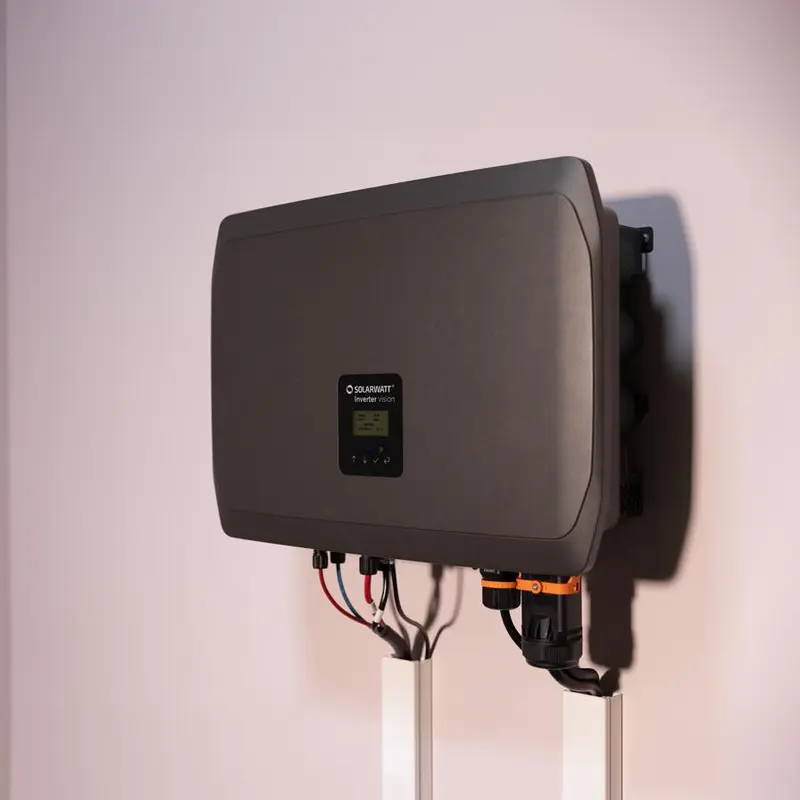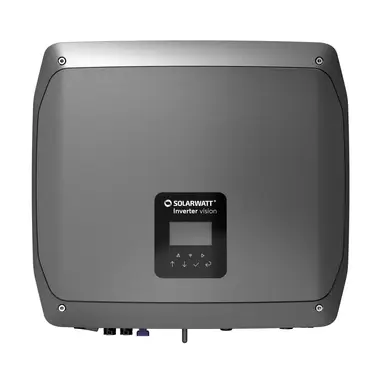

The next generation
of inverters.
Powerful and efficient.
Your partner for every phase.
With the available single-phase (3 kW to 6 kW) and three-phase (5 kW to 15 kW) models, the SOLARWATT Inverter vision covers a wide range of power requirements.
Both inverters feature a backup power function that reliably supplies your essential appliances in the event of a power outage. The three-phase inverter is especially well-suited for larger systems.
Sorry, the screen size of your device is too small for our calculator. Please access the website with your tablet or computer.
Intelligent control.
Optimum performance.
With the optional SOLARWATT Manager, you can easily monitor and control your home energy system and the inverter. This allows you to efficiently optimise your household's self-consumption.
Additionally, the meter of the SOLARWATT Inverter vision has two communication outputs. This allows for the integration of the SOLARWATT Charger vision into the energy management system without the need for an additional meter and associated installation costs.

Maximum safety for your home.
The SOLARWATT Inverter vision offers an outstanding safety feature: the integrated Arc Fault Circuit Interrupter (AFCI). This system reliably protects against dangerous arcs that can occur due to defective or damaged photovoltaic modules, cables, or connectors.
Arcs in a DC network cannot extinguish themselves and pose a significant fire risk. The advanced detection technology of the inverter identifies such hazards early, enhancing the safety of your solar system.
With our inverters, you are choosing a high safety standard to protect your home or facility from potential fire hazards.

